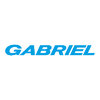Filter interviews by
Jaya Hind Industries Interview Questions, Process, and Tips
Jaya Hind Industries Interview Experiences
51 interviews found
I applied via Walk-in and was interviewed in Nov 2020. There were 3 interview rounds.
Interview Questionnaire
6 Questions
- Q1. Tell me about your self ?
- Q2. Questions concern to college projects.
- Q3. What is meant by lean manufacturing ?
- Ans.
Lean manufacturing is a systematic approach to minimize waste and maximize efficiency in production processes.
Focuses on continuous improvement
Eliminates non-value adding activities
Involves all employees in the process
Reduces lead time and inventory
Examples include Toyota Production System and Kaizen
- Q4. What is seven quality tools ?
- Ans.
Seven quality tools are a set of techniques used for quality control and improvement.
Check sheets
Control charts
Histograms
Pareto charts
Scatter diagrams
Stratification
Cause-and-effect diagrams
- Q5. What is meant by clearance , fit , allowances , tolerance in metrology ?
- Ans.
Clearance, fit, allowances, and tolerance are important concepts in metrology.
Clearance refers to the intentional gap between two mating parts.
Fit refers to the degree of tightness or looseness between two mating parts.
Allowances are the prescribed differences between the maximum and minimum limits of a dimension.
Tolerance is the permissible limit of variation in a dimension.
These concepts are crucial in ensuring the p...
- Q6. Questions asked based on your resume .
Interview Preparation Tips
Engineer Trainee Interview Questions asked at other Companies
I applied via Campus Placement and was interviewed in Oct 2024. There was 1 interview round.
(5 Questions)
- Q1. What is tolerance
- Q2. Function of hydrolic system
- Q3. Different between two cylinder and four cylinder
- Q4. What is bearing
- Ans.
A bearing is a machine element that allows one part to bear another part's weight and facilitate relative motion between the two parts.
Bearing reduces friction between moving parts
Common types include ball bearings, roller bearings, and plain bearings
Used in various applications such as automotive, industrial machinery, and household appliances
- Q5. List count of vernier caliper
Interview Preparation Tips
- CNC
- Cnc operation
I appeared for an interview in Sep 2024.
(4 Questions)
- Q1. What is VFD and it's working What is PLC it's model , block diagram how to troubleshoot problem. What is transformer. What is sensor and types of sonsor. What is rectifier and it's working Types of recti...
- Ans.
Overview of VFD, PLC, transformers, sensors, and rectifiers in maintenance engineering.
VFD (Variable Frequency Drive) controls motor speed by varying frequency and voltage.
PLC (Programmable Logic Controller) automates processes; models include Siemens S7, Allen-Bradley.
Transformers transfer electrical energy between circuits, changing voltage levels.
Sensors detect physical properties; types include temperature, pressur...
- Q2. What is HPDC? Explain INJECTION system? What are all peripheral devices and its functions.
- Q3. What was the system pressure of HPDC machine?
- Ans.
The system pressure of a High-Pressure Die Casting (HPDC) machine typically ranges from 700 to 1500 bar.
HPDC machines operate at high pressures to ensure molten metal fills the mold quickly.
Common pressures for aluminum die casting are around 700-900 bar.
For magnesium die casting, pressures can reach up to 1500 bar.
Maintaining optimal pressure is crucial for minimizing defects in castings.
- Q4. Explain INTENSIFIER IN INJECTION SYSTEM?
Maintenance Engineer Interview Questions asked at other Companies
I appeared for an interview in Sep 2024.
(2 Questions)
- Q1. What is Electrical safety?
- Ans.
Electrical safety refers to practices and measures taken to prevent electrical hazards and accidents.
Ensuring proper grounding of electrical systems to prevent electric shocks
Using insulated tools and equipment to prevent electrical contact
Regular inspection and maintenance of electrical systems to identify and address potential hazards
Following safety protocols and procedures when working with electricity
Using persona...
- Q2. What is Electrical equipment?
- Ans.
Electrical equipment refers to devices that are powered by electricity and used for various purposes.
Electrical equipment includes items such as transformers, generators, motors, circuit breakers, and switches.
These devices are essential for the generation, distribution, and utilization of electrical power.
Electrical equipment can be found in various industries, homes, and commercial buildings.
Regular maintenance and i...
(2 Questions)
- Q1. Electrical safety?
- Q2. What is Electrical maintenance?
- Ans.
Electrical maintenance involves the regular upkeep and repair of electrical systems to ensure they are functioning properly.
Regular inspection of electrical systems
Testing and troubleshooting electrical equipment
Replacing faulty components
Cleaning and lubricating machinery
Updating software and firmware as needed
Electrical Engineer Interview Questions asked at other Companies
Jaya Hind Industries interview questions for popular designations
I appeared for an interview in Feb 2025, where I was asked the following questions.
- Q1. What is CNC MILLING machine
- Ans.
CNC milling machines are automated tools that precisely cut and shape materials using computer-controlled movements.
CNC stands for Computer Numerical Control, allowing for high precision in machining.
Used in various industries, including aerospace, automotive, and manufacturing.
Can work with materials like metal, plastic, and wood.
Examples include vertical and horizontal milling machines.
CNC milling enhances productivi
- Q2. What is force
- Ans.
Force is an interaction that causes an object to change its velocity, direction, or shape, measured in Newtons.
Force is a vector quantity, meaning it has both magnitude and direction.
Common examples include gravitational force, frictional force, and tension.
Newton's second law states that Force = mass × acceleration (F = ma).
A force can cause an object to start moving, stop moving, or change direction.
- Q3. What is the difference between force and torque?
- Ans.
Force is a push or pull on an object, while torque is a rotational force around an axis.
Force is a vector quantity, measured in newtons (N), acting in a straight line.
Torque is also a vector quantity, measured in newton-meters (Nm), and causes rotation.
Example of force: Pushing a car to move it forward.
Example of torque: Using a wrench to tighten a bolt, where the force applied creates rotation.
- Q4. What is laser beam machining?
- Ans.
Laser beam machining is a non-traditional manufacturing process using focused laser beams for cutting, engraving, and material removal.
Uses high-intensity laser beams to melt or vaporize materials.
Commonly used for cutting metals, plastics, and ceramics.
Offers high precision and minimal thermal distortion.
Applications include aerospace, automotive, and electronics industries.
Examples: Laser cutting of sheet metal, engr
- Q5. What is an air compressor and how does it function?
- Ans.
An air compressor is a device that converts power into potential energy stored in pressurized air.
Air compressors work by drawing in air and compressing it to increase pressure.
They are commonly used in various applications, such as powering pneumatic tools.
Examples include portable air compressors for inflating tires and industrial compressors for manufacturing.
Compressors can be categorized into positive displacement
DET Interview Questions asked at other Companies
Get interview-ready with Top Jaya Hind Industries Interview Questions
(2 Questions)
- Q1. Safety rule of 5s
- Q2. Self introduction
Interview Preparation Tips
(1 Question)
- Q1. Technical questions normally
(1 Question)
- Q1. Related maintenance
(1 Question)
- Q1. Technical shop floor
Graduate Engineer Trainee (Get) Interview Questions asked at other Companies
I applied via Naukri.com and was interviewed in Dec 2023. There were 2 interview rounds.
(2 Questions)
- Q1. What did you do working in the previous company ?
- Q2. How many years of experience do you have?
(1 Question)
- Q1. Where are you living?
Project Engineer Interview Questions asked at other Companies
I applied via Job Fair
(1 Question)
- Q1. What are the technical documentation in Quality control
- Ans.
Technical documentation in Quality control includes procedures, work instructions, specifications, test methods, and records.
Procedures outline the steps to be followed for quality control processes.
Work instructions provide detailed instructions on how to perform specific tasks.
Specifications define the requirements that a product or process must meet.
Test methods describe the methods used to test product quality.
Reco...
Quality Engineer Interview Questions asked at other Companies
I applied via Walk-in and was interviewed in Sep 2023. There were 2 interview rounds.

(4 Questions)
- Q1. Department questions
- Q2. How many types of gears are there ?
- Ans.
There are several types of gears including spur gears, helical gears, bevel gears, worm gears, etc.
Spur gears: Most common type with straight teeth
Helical gears: Teeth are cut at an angle for smoother operation
Bevel gears: Used to transmit motion between intersecting shafts
Worm gears: Used for high reduction ratios and high torque applications
- Q3. 3 types of gears (Spur Gear , Helical Gear , Rack internal gear )
- Ans.
Spur gears have straight teeth and are used for high speed applications, helical gears have angled teeth for smoother operation, and rack internal gears are used in linear motion systems.
Spur gears have straight teeth that are parallel to the gear axis
Helical gears have angled teeth for smoother and quieter operation compared to spur gears
Rack internal gears are used in linear motion systems where a gear rotates around
- Q4. How many types of views we show in the engineering drawing
- Ans.
There are three main types of views shown in engineering drawings: front view, top view, and side view.
Front view: Shows the object as it would appear from the front
Top view: Shows the object as it would appear from the top
Side view: Shows the object as it would appear from the side
Interview Preparation Tips
Production & Maintenance Engineer Interview Questions asked at other Companies
I applied via Naukri.com and was interviewed in Jun 2023. There were 3 interview rounds.

(2 Questions)
- Q1. Types of transformer?
- Ans.
Types of transformers include step-up, step-down, isolation, autotransformer, and distribution transformers.
Step-up transformer increases voltage output
Step-down transformer decreases voltage output
Isolation transformer provides electrical isolation between primary and secondary windings
Autotransformer has a single winding with multiple taps for different voltage levels
Distribution transformer is used to distribute ele
- Q2. What is transformer?
- Ans.
A transformer is a device that transfers electrical energy between two or more circuits through electromagnetic induction.
Consists of two coils of wire, known as primary and secondary coils
Primary coil receives electrical energy and creates a magnetic field
Magnetic field induces a voltage in the secondary coil, transferring energy
Used in power distribution, voltage regulation, and isolation
Examples include step-up tran...
(3 Questions)
- Q1. What is motor? Types of motors?
- Ans.
A motor is a device that converts electrical energy into mechanical energy. Types include AC motors (induction, synchronous) and DC motors (brushed, brushless).
A motor is a device that converts electrical energy into mechanical energy
Types of motors include AC motors (induction, synchronous) and DC motors (brushed, brushless)
AC motors are commonly used in household appliances and industrial applications
DC motors are of...
- Q2. What is the value of power factor ?
- Ans.
Power factor is the ratio of real power to apparent power in an electrical system.
Power factor is a unitless value between 0 and 1.
It indicates how effectively electrical power is being converted into useful work output.
A higher power factor signifies more efficient energy usage.
Power factor can be improved by using power factor correction devices.
Formula: Power Factor = Real Power / Apparent Power
- Q3. What is the value of √3?
- Ans.
The value of √3 is approximately 1.732.
The square root of 3 is an irrational number.
It is commonly approximated as 1.732.
It is used in various mathematical calculations and engineering applications.
Electrical Technician Interview Questions asked at other Companies
Top trending discussions






Jaya Hind Industries Interview FAQs
Some of the top questions asked at the Jaya Hind Industries interview -
The duration of Jaya Hind Industries interview process can vary, but typically it takes about less than 2 weeks to complete.
Tell us how to improve this page.
Jaya Hind Industries Interviews By Designations
- Jaya Hind Industries Diploma Trainee Engineer Interview Questions
- Jaya Hind Industries Trainee Interview Questions
- Jaya Hind Industries Electrical Maintenance Engineer Interview Questions
- Jaya Hind Industries Graduate Engineer Trainee (Get) Interview Questions
- Jaya Hind Industries Senior Engineer Interview Questions
- Jaya Hind Industries Quality Engineer Interview Questions
- Jaya Hind Industries Maintenance Engineer Interview Questions
- Jaya Hind Industries Junior Engineer Interview Questions
- Show more
Interview Questions for Popular Designations
- Trainee Interview Questions
- Diploma Trainee Engineer Interview Questions
- Team Lead Interview Questions
- Analyst Interview Questions
- Software Engineer Interview Questions
- Graduate Engineer Trainee (Get) Interview Questions
- System Engineer Interview Questions
- Senior Software Engineer Interview Questions
- Show more
Jaya Hind Industries Interview Process
based on 58 interviews
Interview experience
Interview Questions from Similar Companies
Jaya Hind Industries Reviews and Ratings
based on 668 reviews
Rating in categories
|
Engineer
180
salaries
| ₹2.5 L/yr - ₹7 L/yr |
|
Senior Engineer
131
salaries
| ₹4.4 L/yr - ₹9.5 L/yr |
|
Junior Engineer
123
salaries
| ₹2 L/yr - ₹4.6 L/yr |
|
Trainee
116
salaries
| ₹1.2 L/yr - ₹3 L/yr |
|
Assistant Manager
87
salaries
| ₹5.9 L/yr - ₹10.8 L/yr |

JBM Group

Subros

Endurance Technologies

Spark Minda
- Home >
- Interviews >
- Jaya Hind Industries Interview Questions














